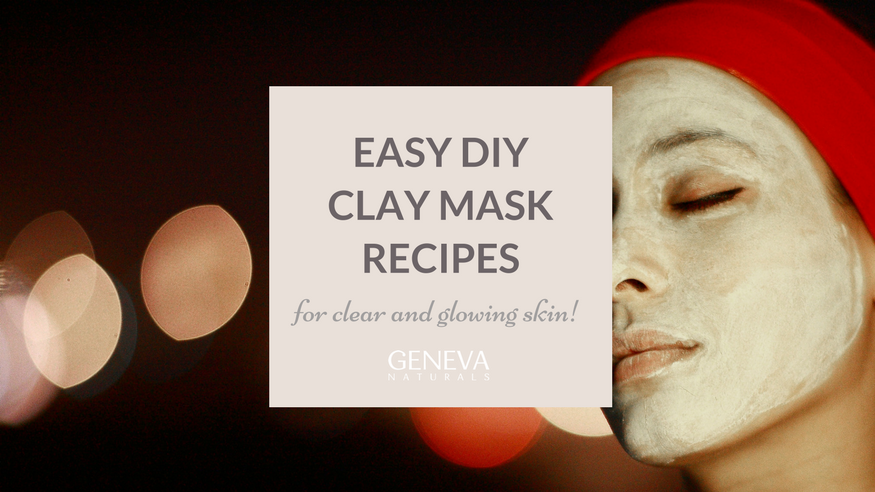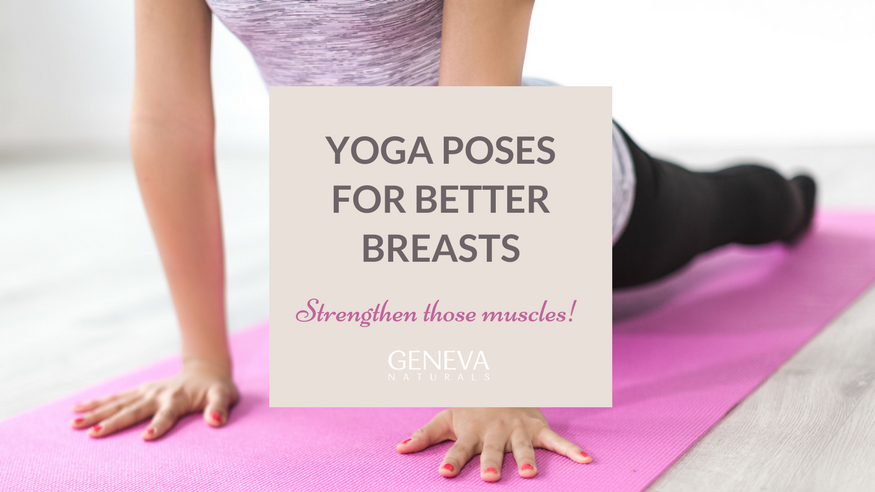DIY Face Masks for your Skin Type


Face masks are all the rage in the skin care world right now, and for good reason! In order to get the most benefit out of your mask, make sure you're using ones that are formulated for your skin type. As the largest organ in the human body,, our skin requires careful consideration. By using the wrong products, we could be doing more damage than good and send the wrong signals to our skin. In order to find out what type of skin you have and determine which of these DIY face masks you should be using, consider one or both of the following skin type tests:
Blotting Sheet Method
The faster of the 2 methods, this is the best way to determine whether you have dry or oily skin. By using blotting paper that can be purchased at your local drugstore, gently pat around different areas of your face. You can best see the results by holding the paper in front of the light. If the sheet shows signs of little to no oil, you are more likely to have dry skin. If the blotting sheet shows oil from the forehead and nose areas, you are most likely to have normal/combination skin. However, if the blotting paper looks saturated with oil from various parts of your face, you are extremely likely to have oily skin.
Bare-Face Method
This process begins with fresh, clean skin. Leave the skin bare (do not apply your normal moisturizers or serums). After about 30 minutes, look closely in the mirror for areas where the skin may be shiny – specifically your cheeks, nose, chin and forehead. After another 30 minutes, determine whether or not your skin feel parched or tight. If your skin feels tight, you are most likely prone to dry skin. If you have developed noticeable shine on your nose and forehead, then your skin is most likely to be normal/combination. If shininess has progressed and appears noticeable on your cheeks, forehead, nose and possibly chin, you are most likely to have oily skin.
Based on the results of these tests, we have broken it down in to 3 specific skin types:
- Dry Skin
- Normal/Combination Skin
- Oily Skin
Dry Skin
Dry skin feels tight throughout the day. You may see noticeable flakiness or skin that peels. There are different factors that can contribute to having dry skin like genetics, environmental factors, hormone changes, dehydration and climate.It’s extremely important to drink lots of water when you have typically dry skin. The added moisture from drinking water will help provide extra moisture when the skin needs it most and it will make a difference in how your skin looks and feels.
Regular exfoliation using a product with gentle ingredients will also help to remove build-up of dead skin cells without removing skin’s natural oils. Following exfoliation with gentle moisturizers allows the necessary moisture to penetrate the skin rather than causing additional build up.
You may experience extreme dryness in the colder months of the year, so be prepared to adapt your skin care routine accordingly.

Normal/Combination Skin
Normal/Combination skin is the most common. Some people may experience dryness in their cheeks, but find other areas of their skin look oily throughout the day. Finding the right moisturizer with normal/combination skin is imperative. You don’t want a heavy cream that will be too much moisture and make the skin oilier, but you need more than an oily skin moisturizer. Daily exfoliation is a great way to smooth the dryer areas and remove any dead skin cells to allow a more even absorption of any moisturizers.
Using gel like moisturizers are absorbed more quickly and for normal/combination skin, are less likely to lead to breakouts; consider starting with a small amount of moisturizer and adding extra if necessary to avoid over moisturizing. Using too much moisturizer can irritate the skin and lead to breakouts.
Oily Skin
Oily skin is often shiny and more prone to breakouts. But the good news is that oily skin often looks younger and is less prone to developing wrinkles because it has more natural moisture.
Gentle exfoliation on a daily basis is necessary for oily skin to promote cell regeneration and prevent build up. It’s useful for balancing your skin tone and texture, as well. If you experience discoloration called PIH (post inflammatory hyperpigmentation), the regular exfoliation will help to lighten these spots. If your oily skin is prone to breakouts, consider using an exfoliator with anti-bacterial properties to help fight blemishes.
Sensitive Skin
Sensitive skin is tricky. You can have dry, normal/combination or oily skin and still have sensitive skin. Discovering the right products for your skin type that will not cause additional irritation for your sensitive skin takes time. You may have to try several different ingredient combinations in order to determine the right ones for you. Don’t get discouraged – there are so many options in the marketplace or even using simple ingredients at home. Just be sure to read the ingredients and avoid anything that is considered harsh, contains synthetic fragrance, mineral oil or detergents: read the full list of ingredients to avoid here.
If you’re looking to introduce a new mask to your skin routine, consider these various DIY masks you can make with ingredients around the house. Choose the right mask based on your skin type and be on your way to healthy, smoother, younger looking skin! Try out this recipe from MsAaliyahJay:
Dry Skin Face Masks
Aloe, Avocado and Olive Oil
- 1 tsp. Aloe Vera Gel
- ½ Avocado crushed
- 1 tsp. Olive Oil
Avocados are packed with nutrients including antioxidants and vitamins. The moisturizing benefits of avocado make it a powerful ingredient in a mask for dry skin. Olive oil is also super hydrating and anti-aging. Aloe Vera works to fight bacteria and keep skin bright. These ingredients combined are a force to be reckoned with for dry skin.
Mix all 3 ingredients together to form a paste like mixture. Apply the mixture to your face over the sink or a bowl – it gets messy. After about 10 minutes, gently wipe the ingredients with a damp paper towel and discard it. This will prevent all the ingredients piling up in the drain of your sink. Gently pat your face dry with a soft towel. This make will leave your skin feeling so hydrated. And there’s no need to moisturize afterwards… the ingredients for the mask already took care of that!
Oats, Coconut Oil and Egg Whites
- 1 Handful of Dry Oats
- 1 tsp. Coconut Oil
- 1 Egg White
This mask will help you get the glowing skin you thought was impossible with dry skin. Egg whites are effective at brightening the skin and the coconut oil provides the supple moisture to even the deepest layers of your dry skin. Dry oats are used as an exfoliant in combination with the other ingredients to give your skin that healthy glow.
Mix all 3 of the ingredients together to form a paste. Apply the mask directly to your face over the sink or a bowl to prevent making a mess all over the counter. Gently rinse the ingredients from your face after 10-15 minutes and pat dry. Add your favorite moisturizer and you’ll see bright, more youthful looking skin.
Baking Soda, Banana and Honey
- 1 Tbsp. Baking Soda
- ½ Ripe Banana (mashed)
- 1 tsp. Honey
The exfoliating characteristics of baking soda combined with the natural humectant quality of honey helps to draw moisture deep into the pores for maximum hydration. And loaded with vitamins, the banana adds brightness and clarity to an otherwise potentially dull complexion.
Mix all 3 of the ingredients together forming a paste. Apply the mask directly to your face and allow to sit for 10-15 minutes. Rinse your face gently using warm water and pat dry. Don’t forget to top it with your favorite moisturizer (make sure it is a moisturizer with SPF!).

Normal/Combination Skin Face Masks
Avocado and Coconut Oil
- ¼ Avocado
- 1 Tbsp. Coconut Oil
- 2-3 drops Tea Tree Oil
Super rich in nutrients and healthy fats and oils, avocados are a great ingredient in face masks for combination skin. Added with coconut oil to provide moisture and antioxidants that help to repair and nourish cells, this face mask works to moisturize the skin where you need it most while helping to protect it from free radicals and provide anti-aging properties. The tea tree oil is a natural astringent and works to fight acne as well as tighten and tone pores.
Mash the avocado into a lump-free paste, add coconut oil until ingredients are well mixed. Add drops of tea tree oil and blend forming a paste. Apply the mixture gently onto your face, avoiding the area around your eyes. Allow it to sit for 15-20 minutes before rinsing with warm water, and then gently pat to dry. Complete the process by applying your favorite moisturizer.
Egg White and Yogurt
- 1 Egg White
- 1 Tbsp. Yogurt (plain, unsweetened)
Yogurt naturally softens and moisturizes the skin, but also helps to fade discoloration. It works against acne by fighting germs, and the combination with egg whites brings added benefits to tighten your pores and prevent oily skin.
Mix ingredients together in a small bowl and spread over your entire face avoiding your eyes and mouth. Allow the mask to sit for 10-15 minutes before rinsing with warm water. Pat your face dry and follow with your favorite moisturizer.
Oily Skin Face Masks
Lemon and Apple
- 1 Tbsp. Applesauce
- 1 tsp. Lemon Juice
- 1 tsp. Dried Sage
The acidic nature of the apples and lemons helps to exfoliate the skin and remove excess oil. Sage’s astringent properties also help to close pores and prevent future breakouts.
Mix the ingredients together and apply to your face avoiding the eyes and mouth. Allow ingredients to sit for 10-15 minutes before rinsing with warm water. Pat your skin dry gently and follow up with your favorite light weight moisturizer.
Egg Whites and Honey
- 1 Egg White
- 1 tsp. Honey
- Handful of Dry Oats
Using egg whites to tighten pores and dry out oily skin in combination with the exfoliating benefits of dry oats and honey to add nourishment and healing properties makes this mask a sure thing for individuals with oily skin.
Mix all 3 of the ingredients together in a small bowl and apply the mixture directly to your face massaging in areas that tend to be oilier. Allow the mask to sit for 10 minutes before rinsing with warm water, pat gently to dry. Follow up this mask with your favorite light weight moisturizer.

Clay and Witch Hazel
- 1 Tbsp. Witch Hazel
- 1 tsp. Bentonite Clay
- 2 drops Lemon Essential Oil (optional)
The power of clay is unmatched when it comes to exfoliating and removing impurities from the skin; The combination with witch hazel as a powerful astringent works to tighten pores and control excessive oil buildup on the skin which can irritate existing breakouts or lead to future ones.
Mix these ingredients together in a small bowl and apply gently to your face avoiding the eyes and mouth. Massage the mask into your skin and concentrate in areas with greater potential for breakouts. Leave the mask on for 10-15 minutes, even 20 minutes for extremely oily skin. Rinse your face with warm water and gently pat dry. Follow up with your favorite light weight moisturizer.
Honey and Brown Sugar
- 1 Tbsp. Honey
- ½ Tbsp. Brown Sugar
The antibacterial properties of honey make it a great ingredient in fighting against oily skin more prone to breakouts. The brown sugar helps to gently exfoliate your skin without removing necessary natural oils.
Mix the honey and brown sugar together and apply to your face. Be sure to massage gently and avoid overworking the same area to cause additional irritation. Allow the mask to sit for 10 minutes before rinsing with warm water and pat to dry. Apply your favorite light weight moisturizer to finish the process.
*For sensitive skin – all of the above masks are gentle enough for even the most sensitive skin. If you’d like to try a skin test to ensure you are not allergic to any of the ingredients included here, try a small patch on the inside of your forearm. If you don’t experience any reaction, feel free to use any of these recipes for DIY face masks for sensitive skin.
Finding the right skin regimen for you based on your skin type is vital in your pursuit of healthy, smoother, younger looking skin. Keep in mind that skin types can change from a variety of factors like hormones, seasons, age... be flexible and willing to try different things until you find just the right combination for your skin type.
Don't have enough time for DIY face masks? Try our natural Purifying Clay Mask, which combines the power of bentonite and kaolin clay.
Also in Geneva Naturals

What Is A Retinoid Oil? Retinoid Oil Benefits, Uses, Effects & More

DIY Clay Mask Recipes for Clear Skin



